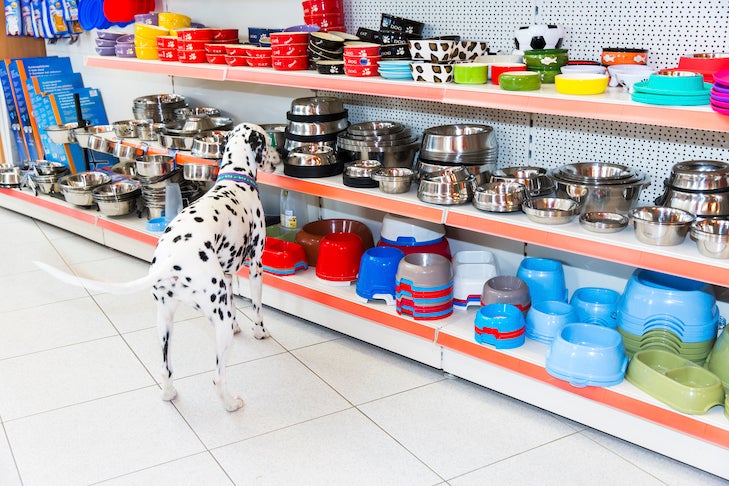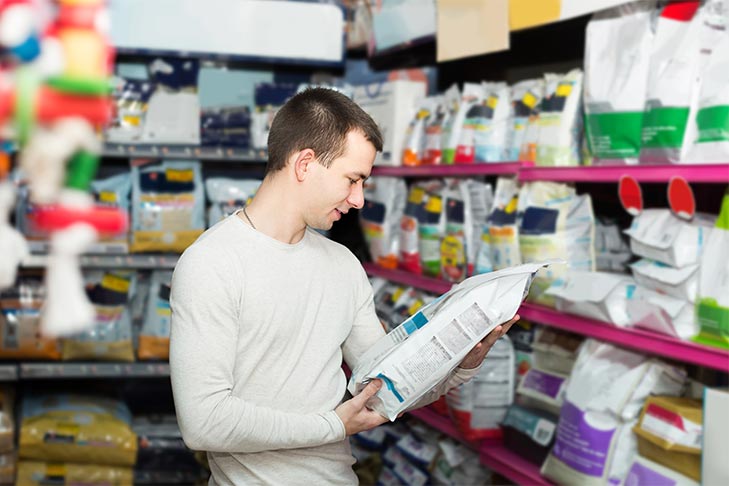
Despite or perhaps as a result of the stress and unusual health precautions Americans experienced in 2020, people focused more than ever on their pets. For the first time, pet industry sales exceeded $100 billion, according to American Pet Products Association (APPA) 2020 State of the Industry Report.
This tidal wave of spending is expected to continue for the near future. Morgan Stanley forecasts that pet industry spending will nearly triple to $275 billion by 2030. A recent AlphaWise survey reported that almost two-thirds of 18-to-34-year-olds plan to get a pet in the next five years, driving a 14% increase in pet ownership. At the same time pet owners, especially younger ones, will spend more – increasing annual household spending from $980 per pet to $1,909 by 2030.
Pet ownership has become a major financial investment for owners, and the following trends show that the size of the investment will only grow. If you’re planning to get a new dog, this information should help you estimate the costs involved so you can save the money you’ll need to be a responsible dog owner.
Impact of COVID-19 Pandemic
- Many people decided to add new pets to their household during the pandemic, and almost 50% of new dog owners said their decision was influenced by the pandemic. The number of U.S. households that have at least one dog (69 million homes) increased to 54% in 2020 from 50% in 2018.
- Millennials make up the demographic containing the most dog owners, although as Gen Z members come of age more of them are acquiring dogs.
- Another change resulting from the pandemic and influencing new dog owners is that more homes now have someone there during the day – up to 39% from 32%.
- Pet owners shopping online increased by almost 20%, up to 86%. Before the pandemic, 60% of pet owners usually purchased pet products at brick-and-mortar stores. During the pandemic, in-person shopping dropped to 41%, while 80% of dog owners bought dog food online.
Increases in Pet Spending
- A significant number of pet owners (35%) spent more on their pet – including food, wellness-related products and other pet care items – in the last 12 months.
- Veterinarian care also became a larger expense, with some pet owners saying they made three visits during the year. Routine veterinary visits make up the second-largest segment of a dog owner’s expenditures after food.
- Owners also spent more for crates, beds, carriers, treats, harnesses, leashes and collars, toys, and shampoo.
- Doggy daycares experienced a growth in the percentage of owners who used their services – from 22% to 28%.
(APPA Table 94: Share of Dollars)
Trends in Breeds of Dogs
- The AKC’s most popular breeds for 2020 (based on dogs registered) were the Labrador Retriever, French Bulldog, German Shepherd Dog, Golden Retriever, and Bulldog.
- The percentage of dog owners with purebred pets stayed the same since 2018 at 56%.
- Male dog owners are more likely to own a purebred dog, and more female dog owners say they own a mixed-breed dog.
- Millennials are more likely to own a purebred dog, while Gen Z and Gen X are more likely to own mixed breeds.
- Geographic area also shows a split, with the Northeast and South having a higher percentage of purebred dogs.

Food Choices Tilt to Premium
- In 2020, more dog owners opted to feed premium dog food, with an increase to 41% from 37%. “In the two largest global pet food markets — the U.S. and China — freeze-dried products continue to reach out and gain more and more share, as this interest in raw food and the very premium nature of those products continues to accelerate,” says Jared Koerten, senior head of pet care research at Euromonitor International.
- The APPA survey showed that the percentage of overweight dogs and those on a specially prescribed diet also increased slightly.
- Treats were another growth segment of the pet food industry, growing in double-digits, according to Koerten.
- Another large increase (from 34% to 44%) occurred in the number of dog owners who give their pets vitamins or other supplements, including joint health supplements.
Pet Health Costs Grow
- More than 90% of respondents took their dog for at least one visit to the veterinarian in the last 12 months.
- More dog owners (36% up from 30%) now rely on their veterinarian to maintain their dog’s dental health.
- About 80% of owners reported that their dog was spayed or neutered.
- Dog owners who administer some type of medication to their dogs increased from 63% to 70%. The rate was highest among those who own large dogs.
- Just over 1/3 of dog owners purchased some type of CBD product for their dog, especially treats and shampoo, used to treat anxiety/stress, arthritis/sore joints, or pain.
- One-fifth of dog owners have health insurance for their dogs, an increase from 15% in 2018.
Training and Safety Products and Services
- Training devices and methods (including treats) saw a surge, with 73% (even higher for Gen X and Millennial dog owners) reporting using some type of training method in 2020 vs. 57% in 2018.
- There was a slight increase in the number of people who took their dogs to obedience training (a total of 8%).
- One-half of dog owners have some type of crate for their pet, an increase from 43%.
- Electronic tracking devices to protect pets have gained in popularity. About 50% of dog owners use one.
- More dog owners are using restraints, especially leashes or harnesses that buckle into the seat, to secure their dog in the car.
(APPA Table 6: Gender and Size of Dog)
Miscellaneous Trends
- In 2021, the states that had the highest percentage of dog-owning households were: Arkansas and Montana 52%; Mississippi 51%; West Virginia 50%; Indiana 49%; Oklahoma 48%; Kentucky, Tennessee, Alabama, and Nebraska 47%.
- Where did owners of new dogs find them? The most popular places were from breeders 21%, shelters 19%, friend or relative 18%, rescue group 14%, or a private party 13% — similar to 2018.
- More people have male than female dogs, but owners who have female dogs increased from 46% to 51%.
- Small dogs remain the most popular size – 47% of dog owners have small dogs.
Unless otherwise noted, the statistics quoted were reported in APPA’s 2021-2022 National Pet Owners Survey, which includes the responses of 9,200 U.S. pet owners. Statistics in the current survey are compared to results of the APPA survey conducted in 2018.
Financial preparedness is a part of responsible dog ownership, and the right banking products can make a big difference. Savings Connect from CIT Bank helps you boost savings and earn more when you bundle with a linked eChecking account. With a Savings Connect account, you can access your accounts 24/7 online, through the CIT Bank mobile app, or through any U.S. ATM with your eChecking debit card. CIT doesn’t charge ATM fees and reimburses up to $30 in other U.S bank’s ATM fees on your eChecking account. With Savings Connect, owners can focus less on finances and more on spending quality time with their dogs. CIT Bank, N.A. is a member of the FDIC.

